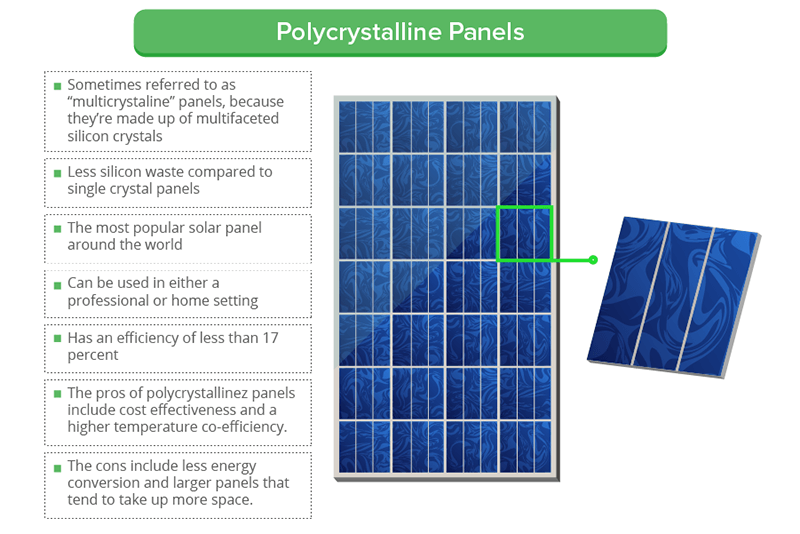Photovoltaic modules are tested at a temperature of 25 degrees c stc about 77 degrees f and depending on their installed location heat can reduce output efficiency by 10 25.
Efficiency testing results for polycrystalline solar panels.
This leaves polycrystalline modules behind the monocrystalline solar cells which achieve module efficiencies of approximately 19 percent.
It may seem counter intuitive but solar panel efficiency is affected negatively by temperature increases.
As the temperature of the solar panel increases its output current increases exponentially while the voltage output is reduced linearly.
With the many crystals in each cell there is less freedom for the electrons to move around.
Polycrystalline solar panels are made from fragments of silicon melted together to form the wafers.
The current delivered polycrystalline solar panel efficiency stands at 15 22 you can recognise a polycrystalline solar panel by the square cut and blue speckled colour.
If a solar panel has 20 percent efficiency that means it s capable of converting 20 percent of the sunshine hitting it into electricity.
The highest efficiency solar panels on the market today can reach almost 23 percent efficiency.
The efficiency of polycrystalline solar panels today is about 15 percent.
Thin film solar panels thin film solar panels are made by covering a substrate of glass plastic or metal with one or more thin layers of photovoltaic material.
Panel efficiency total panel efficiency is measured under standard test conditions stc based on a cell temperature of 25 c solar irradiance of 1000w m2 and air mass of 1 5.
If you use a multimeter inappropriately you could possibly damage your panels.
Additionally the only way to know if you have purchased high quality panels is through solar panel testing.
However thanks to new technologies polycrystalline panels are now much closer in efficiency to monocrystalline solar panels than they have been in the past.
The majority of solar panels deployed today are made from either monocrystalline or polycrystalline solar cells.
Polycrystalline panel efficiency ratings will typically range from 15 to 17.
This crystal structure makes the efficiency rate of polycrystalline panels lower than monocrystalline panels.
Using a multimeter for solar panel tests.
This is offset by the significantly lower production costs and the significantly lower energy requirements.
Poly solar panels are slightly less efficient than mono panels due to imperfections in the surface of the solar cells.
Thin film solar panels.
The average efficiency of solar panels falls between the 17 to 19 percent efficiency range.





























